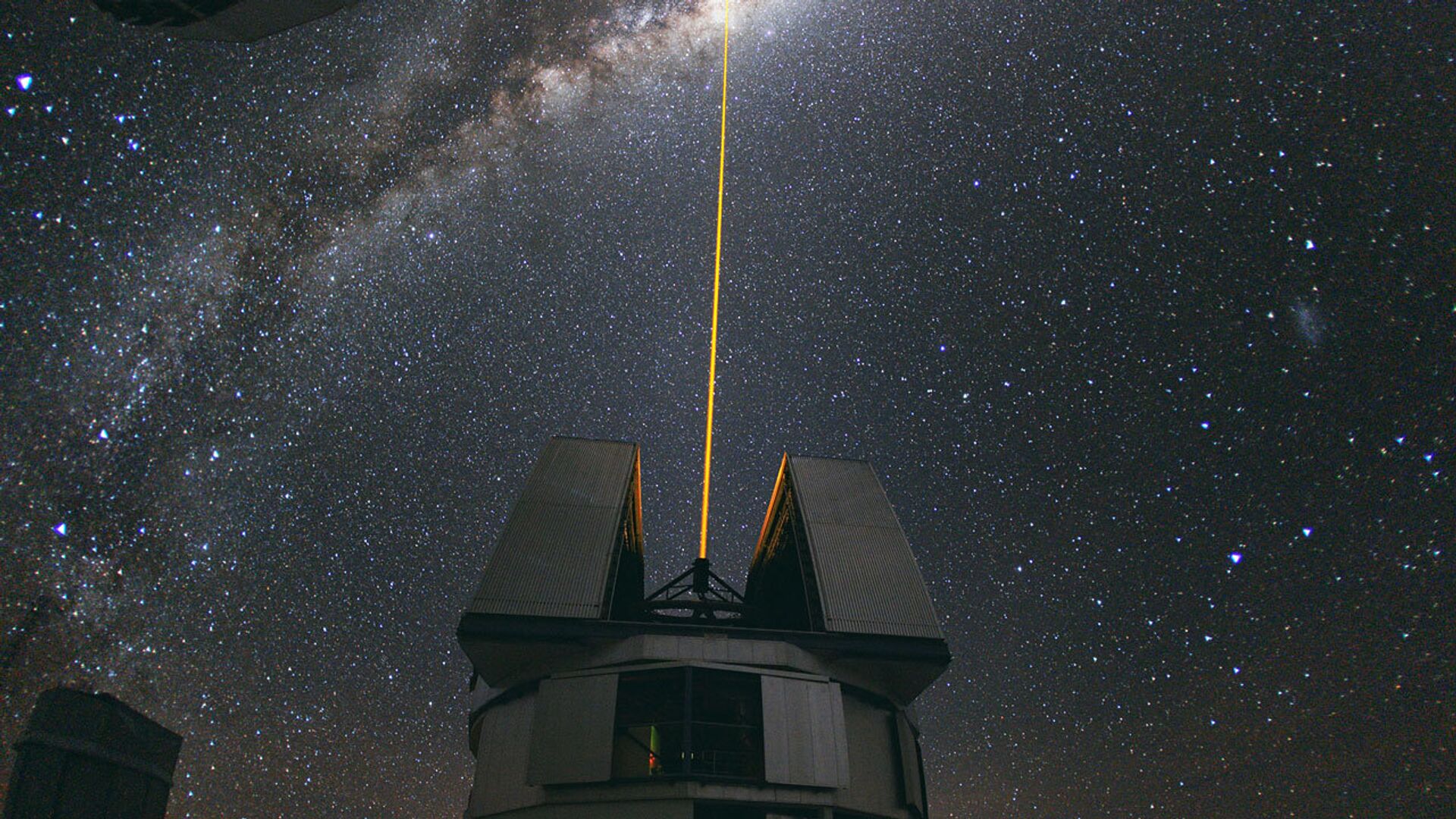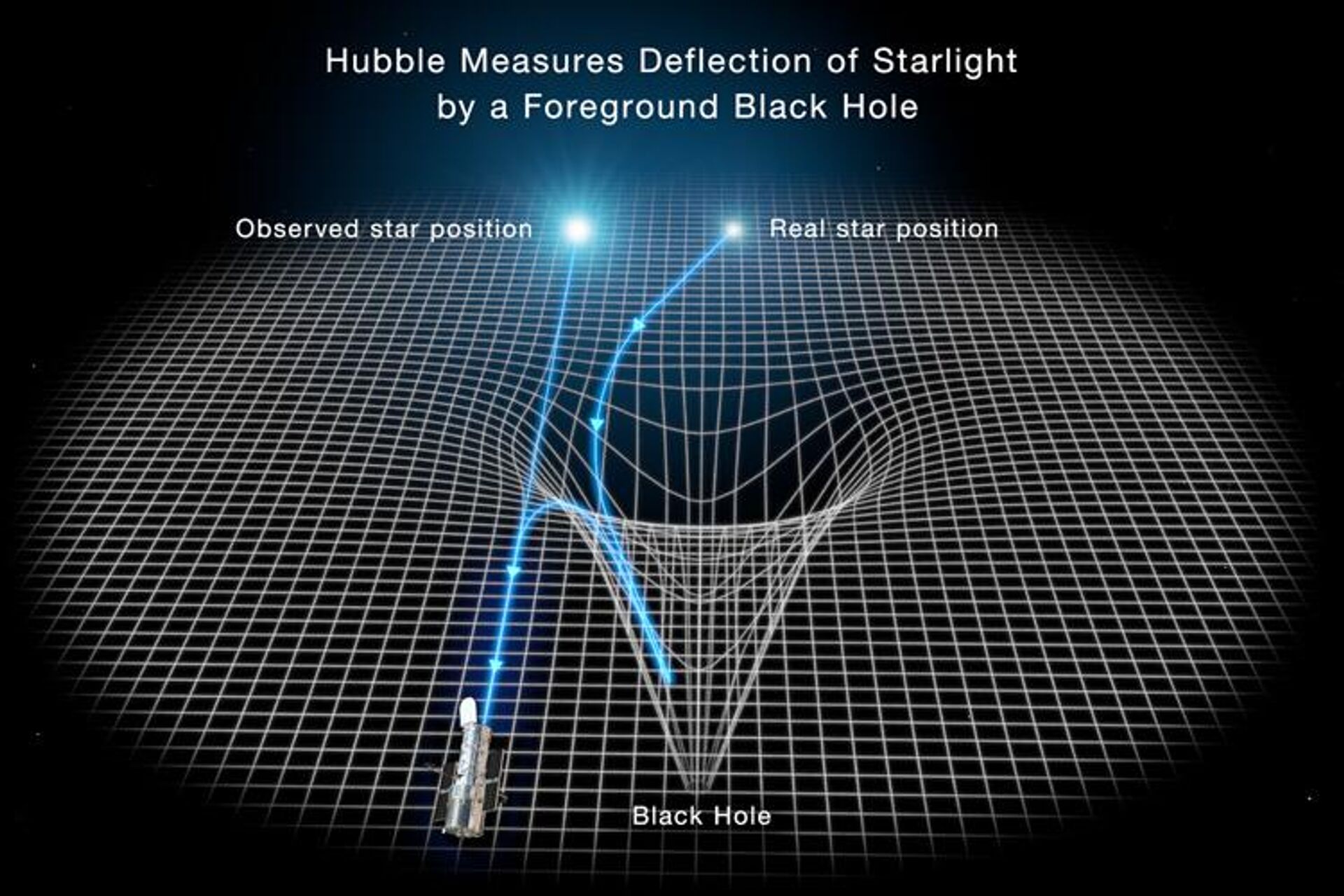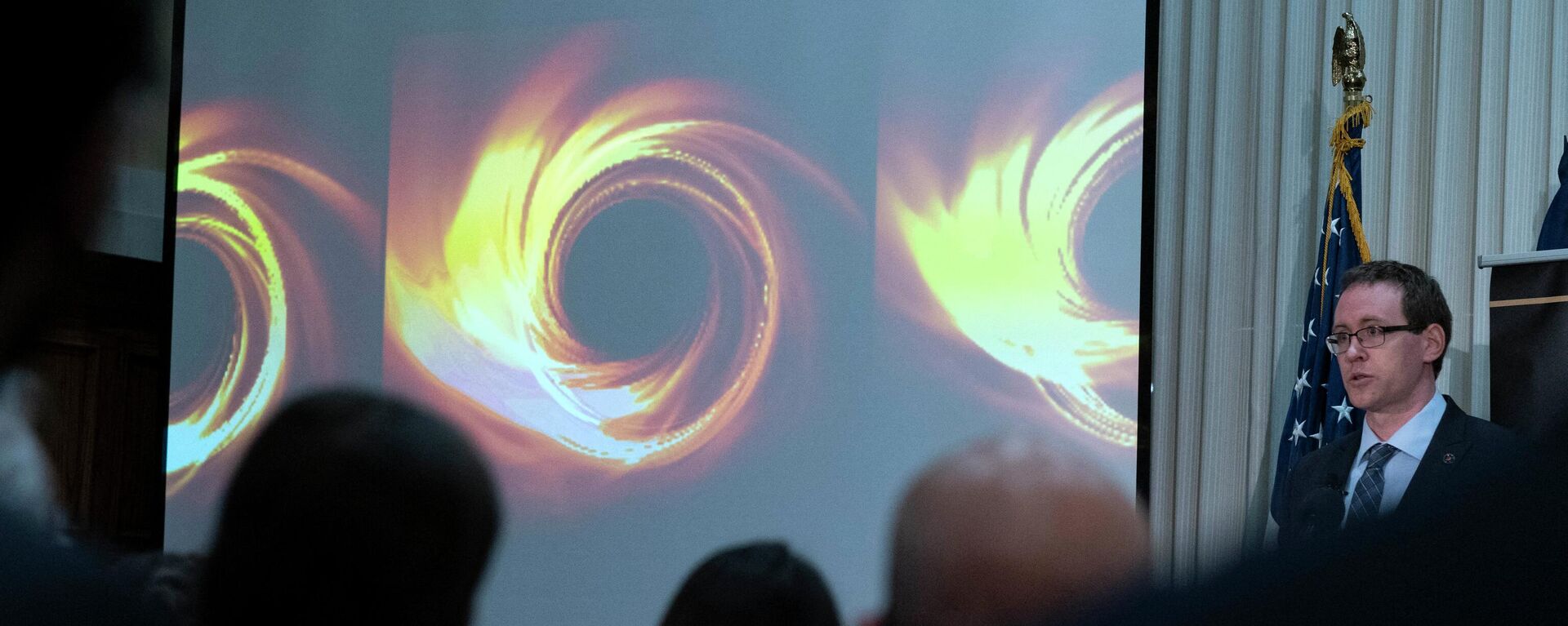Astronomers May Have Just Identified the First-Ever Star-Free Drifting Black Hole
04:09 GMT 12.06.2022 (Updated: 16:57 GMT 12.04.2023)

© ESO
Subscribe
By definition, black holes are invisible unless they are part of a star binary or are surrounded by an accretion disk. Although most stellar-sized black holes are not, astronomers have been looking for them through gravitational microlensing events, in which the black hole bends light from nearby stars as it travels toward the galactic center.
Although further evidence is needed to rule out the possibility of a neutron star, early findings suggest a team led by UC Berkeley may have discovered the first free-floating black hole.
According to a university news release, a team of researchers, led by graduate student Casey Lam and Jessica Lu, a UC Berkeley associate professor of astronomy, have discovered what appears to be a free-floating black hole by observing the brightening of a more distant star as its light was distorted by the object's strong gravitational field — a process known as gravitational microlensing.
If big stars die and leave behind black holes, as scientists believe, there should be hundreds of millions of them distributed throughout the Milky Way. However, the problem is that isolated black holes are undetectable, and the team's new research, prepared for publication in The Astrophysical Journal Letters, attempts to shed a light on the issue, in a figurative sense.
By using the gravitational microlensing method the researchers could calculate that the mass of the unseen compact object is between 1.6 and 4.4 times that of the sun.
However, the team warned that the object might be a neutron star rather than a black hole since scientists believe the relic of a dead star must be heavier than 2.2 solar masses in order to collapse to a black hole. Neutron stars are likewise tight, compact objects, but their gravity is counterbalanced by internal neutron pressure, which prevents them from collapsing further into black holes.
The object is the first dark stellar remnant — a stellar "ghost" — observed roaming around the galaxy unpaired with another star, whether it be a black hole or a neutron star.
"This is the first free-floating black hole or neutron star discovered with gravitational microlensing," Lu is quoted as saying. "With microlensing, we're able to probe these lonely, compact objects and weigh them. I think we have opened a new window onto these dark objects, which can't be seen any other way."
The scientists determined that four other microlensing events were not created by a black hole, albeit two of them were most likely caused by a white dwarf or neutron star. The team also determined the galaxy's expected number of black holes is 200 million, which is similar to what most theorists projected.

This illustration shows how the gravity of a black hole warps spacetime and bends the light of a distant star so that its position is shifted as seen from Earth.
© Photo : NASA, ESA, STScI, Joseph Olmsted
Determining the number of these compact objects in the Milky Way galaxy will aid astronomers in better understanding the evolution of stars and our galaxy, as well as reveal whether any of the unseen black holes are primordial black holes, which some cosmologists believe were produced in large numbers during the Big Bang.
In the meantime, another study from Baltimore's Space Telescope Science Institute (STScI) investigated the same microlensing event and argued that the compact object's mass is closer to 7.1 solar masses, indicating that it is unmistakably a black hole. This team's research, led by Kailash Sahu, is yet to be published in The Astrophysical Journal
It is notable that both teams utilized the same data: photometric measurements of the distant star's brightness as its light was distorted or "lensed" by the super-compact object, and astrometric measurements of the distant star's position in the sky altering as a result of the lensing object's gravitational distortion.
The photometric data came from two microlensing surveys: the Optical Gravitational Lensing Experiment (OGLE), which is run by Warsaw University and uses a 1.3-meter telescope in Chile, and the Microlensing Observations in Astrophysics (MOA), which is run by Osaka University and uses a 1.8-meter telescope in New Zealand. NASA's Hubble Space Telescope provided the astrometric data. And STScI is in charge of the telescope's science program and science operations.
While such surveys find hundreds of stars yearly and have only been intensified by microlensing, it was the inclusion of astrometric data that allowed the two teams to establish the compact object's mass and distance from Earth.
It is believed to be between 2,280 and 6,260 light-years (700-1920 parsecs) away, in the direction of the Milky Way's core and near the huge bulge that surrounds the galaxy's central big black hole, according to the UC Berkeley-led research. But the STScI group estimated the object to be 5,153 light-years (1,580 parsecs) away.
According to the news release, UC Berkeley's Lu, who has been searching for free-floating black holes since 2008, hoped the data would help her better estimate their number in the galaxy, which is believed to be between 10 million and 1 billion. Star-sized black holes have only been discovered as part of binary star systems so far.

The star-filled sky in this Hubble Space Telescope photo is located in the direction of the galactic center.
© Photo : NASA, ESA, Kailash Sahu(STScI), with image processing by STScI’s Joseph DePasquale
Black hole x-rays, which are created as material from the star falls onto the black hole, or modern gravitational wave detectors, which are sensitive to mergers of two or more black holes, can be spotted in binaries. However, such occurrences are uncommon.
"Casey and I saw the data and we got really interested. We said, 'Wow, no black holes. That's amazing,' even though there should have been," Lu explained. "And so, we started looking at the data. If there were really no black holes in the data, then this wouldn't match our model for how many black holes there should be in the Milky Way. Something would have to change in our understanding of black holes -- either their number or how fast they move or their masses."
Interestingly, the length of the lensing event was the primary indicator, according to the research. Black holes reportedly account for just 1% of measurable microlensing events, so looking at all of them would be like looking for a needle in a haystack. However, according to the scientists, around 40% of microlensing occurrences lasting greater than 120 days are likely to be black holes.
"How long the brightening event lasts is a hint of how massive the foreground lens bending the light of the background star is," Lam said, per the news release. "Long events are more likely due to black holes. It's not a guarantee, though, because the duration of the brightening episode not only depends on how massive the foreground lens is, but also on how fast the foreground lens and background star are moving relative to each other. However, by also getting measurements of the apparent position of the background star, we can confirm whether the foreground lens really is a black hole."

